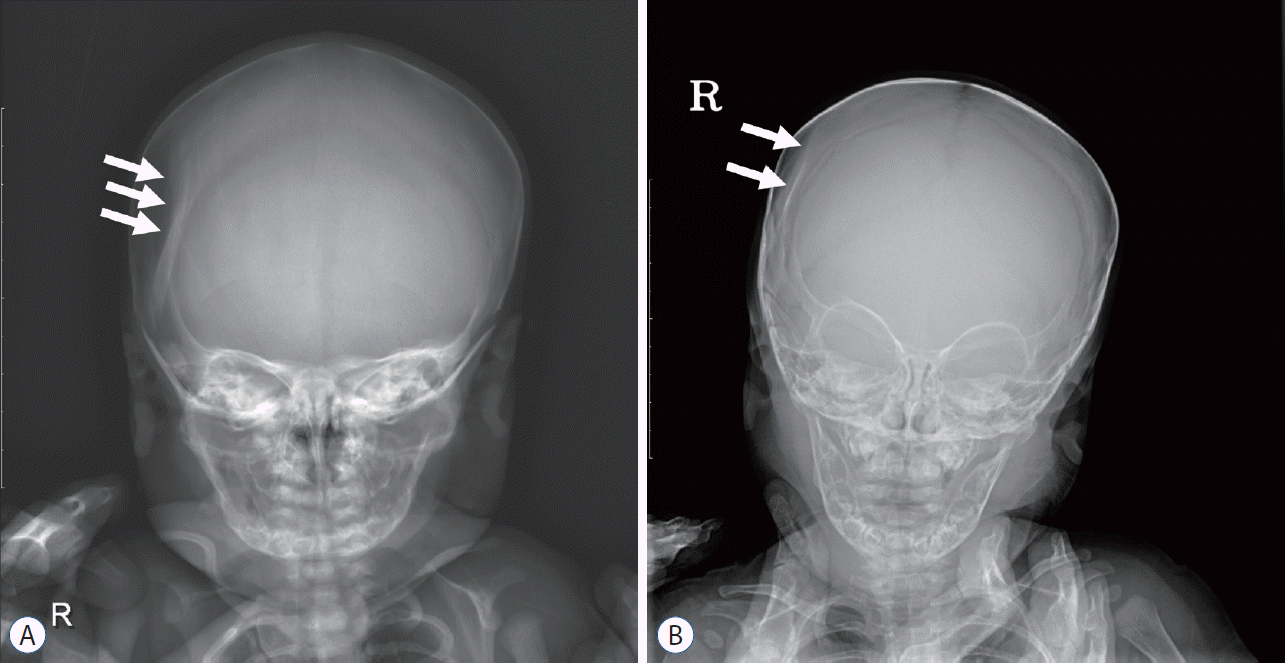1. Alexander JM, Leveno KJ, Hauth J, Landon MB, Thom E, Spong CY, et al. Fetal injury associated with cesarean delivery. Obstet Gynecol. 90:885–890. 2006.

2. Amar AP, Aryan HE, Meltzer HS, Levy ML. Neonatal subgaleal hematoma causing brain compression: report of two cases and review of the literature. Neurosurgery. 4:1470–1474. 2003.

3. Ami O, Maran JC, Gabor P, Whitacre EB, Musset D, Dubray C, et al. Three-dimensional magnetic resonance imaging of fetal head molding and brain shape changes during the second stage of labor. PLoS One. e0215721. 14:2003.

4. Blanc F, Bigorre M, Lamouroux A, Captier G. Early needle aspiration of large infant cephalohematoma: a safe procedure to avoid esthetic complications. Eur J Pediatr. 179:265–269. 2020.

5. Boulet SL, Alexander GR, Salihu HM, Pass M. Macrosomic births in the united states: determinants, outcomes, and proposed grades of risk. Am J Obstet Gynecol. 188:1372–1378. 2003.

6. Chadwick LM, Pemberton PJ, Kurinczuk JJ. Neonatal subgaleal haematoma: associated risk factors, complications and outcome. J Paediatr Child Health. 32:228–232. 1996.

7. Chang HY, Chiu NC, Huang FY, Kao HA, Hsu CH, Hung HY. Infected cephalohematoma of newborns: experience in a medical center in Taiwan. Pediatr Int. 47:274–277. 2005.

8. Chung HY, Chung JY, Lee DG, Yang JD, Baik BS, Hwang SG, et al. Surgical treatment of ossified cephalhematoma. J Craniofac Surg. 15:774–779. 2004.

9. Cieplinski JAM, Bhutani VK. Lactational and neonatal morbidities associated with operative vaginal deliveries. 1191. Pediatric Research. 39:201. 1996.

10. Davis DJ. Neonatal subgaleal hemorrhage: diagnosis and management. CMAJ. 164:1452–1453. 2001.
11. Demissie K, Rhoads GG, Smulian JC, Balasubramanian BA, Gandhi K, Joseph KS, et al. Operative vaginal delivery and neonatal and infant adverse outcomes: population based retrospective analysis. BMJ. 329:24–29. 2004.

12. Dupuis O, Silveira R, Dupont C, Mottolese C, Kahn P, Dittmar A, et al. Comparison of “instrument-associated” and “spontaneous” obstetric depressed skull fractures in a cohort of 68 neonates. Am J Obstet Gynecol. 192:165–170. 2005.

13. Eseonu CI, Sacino AN, Ahn ES. Early surgical intervention for a large newborn cephalohematoma. Pediatr Neurosurg. 51:210–213. 2016.

14. Firlik KS, Adelson PD. Large chronic cephalohematoma without calcification. Pediatr Neurosurg. 30:39–42. 1999.

15. Gupta R, Cabacungan ET. Neonatal birth trauma: analysis of yearly trends, tisk factors, and outcomes. J Pediatr. 238:174–180. 2021.
16. Hanigan WC, Powell FC, Miller TC, Wright RM. Symptomatic intracranial hemorrhage in full-term infants. Childs Nerv Syst. 11:698–707. 1995.

17. Högberg U, Fellman V, Thiblin I, Karlsson R, Wester K. Difficult birth is the main contributor to birth-related fracture and accidents to other neonatal fractures. Acta Paediatr. 109:2040–2048. 2020.

18. Kendall N, Woloshin H. Cephalhematoma associated with fracture of the skull. J Pediatr. 41:125–132. 1952.
19. LeBlanc CM, Allen UD, Ventureyra E. Cephalhematomas revisited. when should a diagnostic tap be performed? Clin Pediatr (Phila). 34:86–89. 1995.

20. Lee SJ, Kim JK, Kim SJ. The clinical characteristics and prognosis of subgaleal hemorrhage in newborn. Korean J Pediatr. 61:387–391. 2018.

21. Levine MG, Holroyde J, Woods JR Jr, Siddiqi TA, Scott M, Miodovnik M. Birth trauma: incidence and predisposing factors. Obstet Gynecol. 63:792–795. 1984.
22. Mangurten H, Puppala B. Birth injuries. Fanaroff and Martin’s Neonatal Perinatal Medicine-Diseases of the Fetus and Newborn. ed 8. Philadelphia: Mosby Elsevier;2006. p. 529–559.
23. Martin A, Paddock M, Johns CS, Smith J, Raghavan A, Connolly DJA, et al. Avoiding skull radiographs in infants with suspected inflicted injury who also undergo head CT: “a no-brainer?”. Eur Radiol. 30:1480–1487. 2020.

24. Merhar SL, Kline-Fath BM, Nathan AT, Melton KR, Bierbrauer KS. Identification and management of neonatal skull fractures. J Perinatol. 36:640–642. 2016.

25. Nachtergaele P, Van Calenbergh F, Lagae L. Craniocerebral birth injuries in term newborn infants: a retrospective series. Childs Nerv Syst. 33:1927–1935. 2017.

26. Nakahara K, Shimizu S, Kitahara T, Oka H, Utsuki S, Soma K, et al. Linear fractures invisible on routine axial computed tomography: a pitfall at radiological screening for minor head injury. Neurol Med Chir (Tokyo). 51:272–274. 2011.

27. Orman G, Wagner MW, Seeburg D, Zamora CA, Oshmyansky A, Tekes A, et al. Pediatric skull fracture diagnosis: should 3D CT reconstructions be added as routine imaging? J Neurosurg Pediatr. 16:426–431. 2015.

28. Plauché WC. Subgaleal hematoma. a complication of instrumental delivery. JAMA. 244:1597–1598. 1980.

29. Quayle KS, Jaffe DM, Kuppermann N, Kaufman BA, Lee BC, Park TS, et al. Diagnostic testing for acute head injury in children: when are head computed tomography and skull radiographs indicated? Pediatrics. 99:E11. 1997.

30. Reichard R. Birth injury of the cranium and central nervous system. Brain Pathol. 18:565–570. 2008.

31. Robinson S. Neonatal posthemorrhagic hydrocephalus from prematurity: pathophysiology and current treatment concepts. J Neurosurg Pediatr. 9:242–258. 2012.

32. Towner D, Castro MA, Eby-Wilkens E, Gilbert WM. Effect of mode of delivery in nulliparous women on neonatal intracranial injury. N Engl J Med. 341:1709–1714. 1999.

33. Ulma RM, Sacks G, Rodoni BM, Duncan A, Buchman AT, Buchman BC, et al. Management of calcified cephalohematoma of infancy: the University of Michigan 25-year experience. Plast Reconstr Surg. 148:409–417. 2021.

34. Wong CH, Foo CL, Seow WT. Calcified cephalohematoma: classification, indications for surgery and techniques. J Craniofac Surg. 17:970–979. 2006.






 PDF
PDF Citation
Citation Print
Print




 XML Download
XML Download